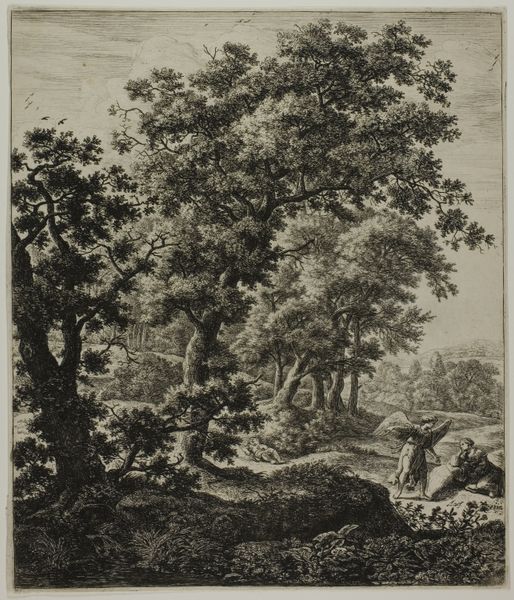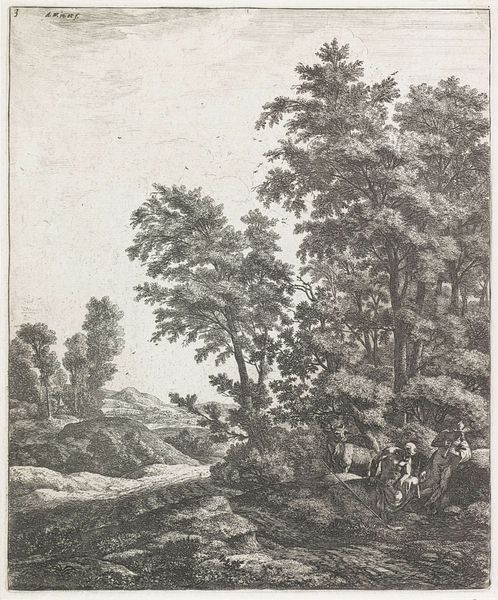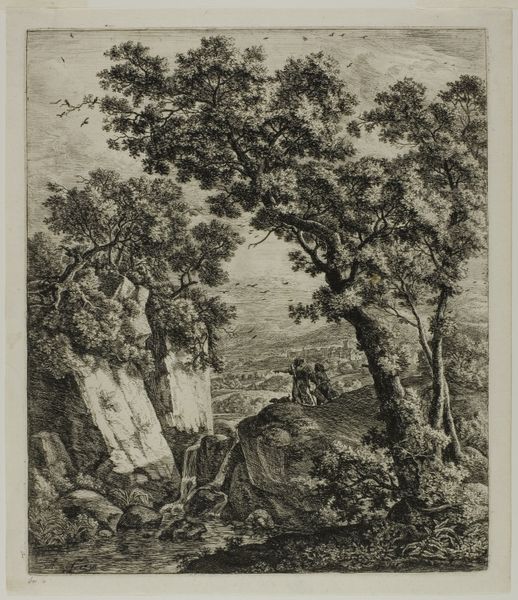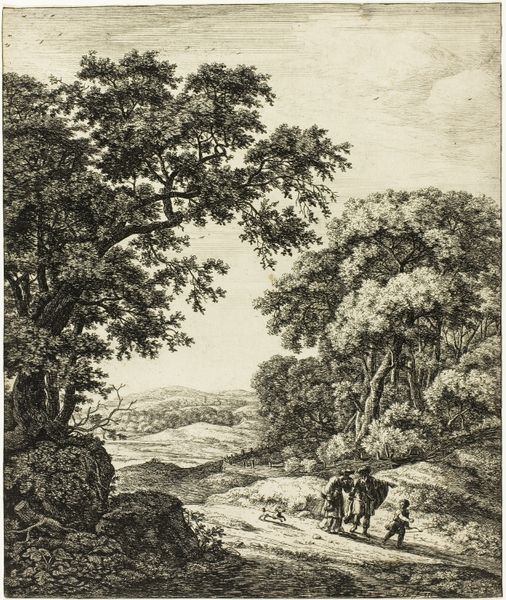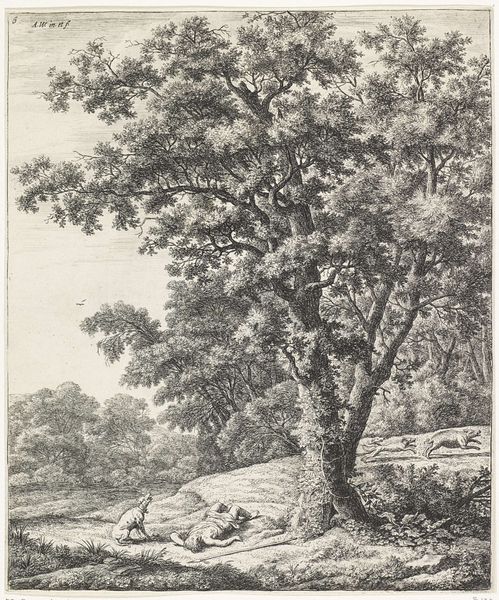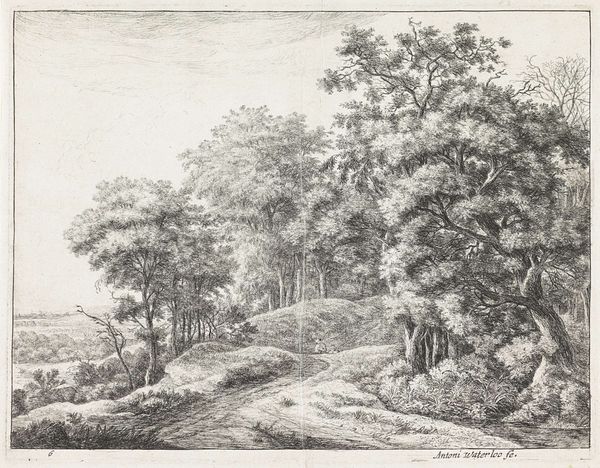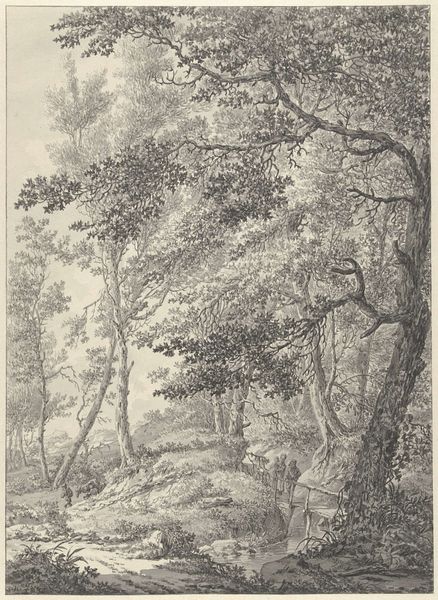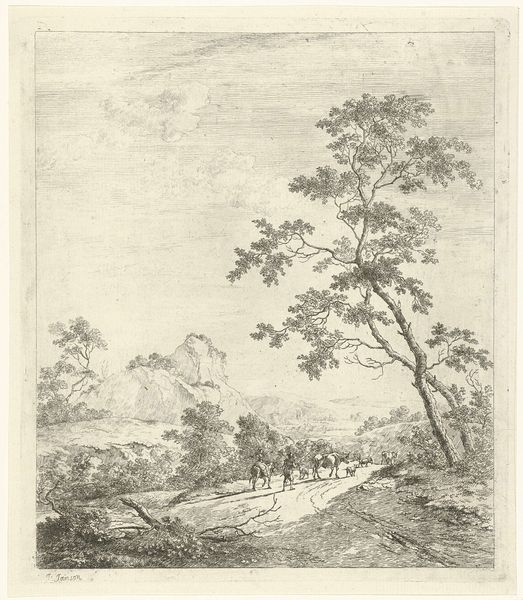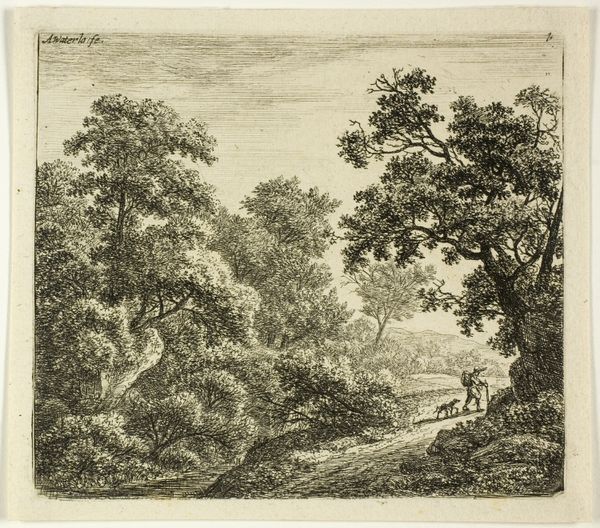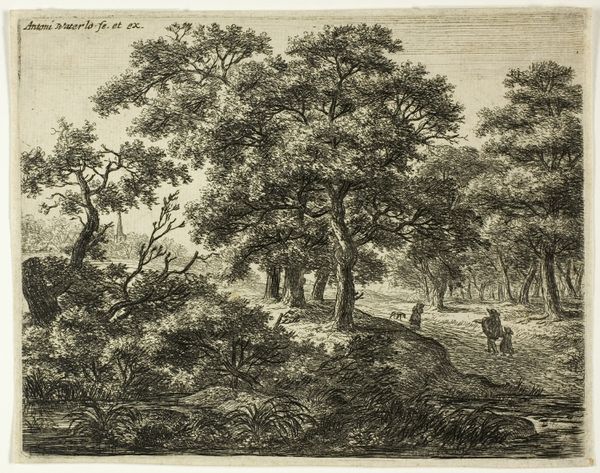
Elias in the Wilderness, from Six Landscape Subjects from the Old Testament 1650 - 1660
0:00
0:00
drawing, print, etching, paper
#
drawing
#
baroque
# print
#
etching
#
landscape
#
paper
Dimensions: 293 × 250 mm (image); 295 × 253 mm (plate); 300 × 257 mm (sheet)
Copyright: Public Domain
Anthonie Waterloo's "Elias in the Wilderness" presents us with a rich landscape, where the prophet Elijah is seen in solitude by a stream. The presence of the raven is striking; it delivers sustenance to Elijah, a symbol rooted in ancient narratives of divine providence. The motif of the raven, a messenger of the gods, echoes through history. Consider its appearance in Greek myths and its role in conveying knowledge or warning of impending events. The image of the raven bringing nourishment can be seen as a parallel to similar motifs in other cultures, where animals act as intermediaries between the divine and the human. The landscape itself is significant. The wilderness serves as a space for reflection and transformation. This setting resonates with the archetype of the hero's journey into the unknown, a concept that continues to inspire artists and storytellers. The image taps into our collective memory, evoking the deep-seated human need for spiritual renewal and connection with nature. The wilderness, the prophet, the raven: these elements create a powerful image, engaging viewers on a profound, subconscious level.
Comments
No comments
Be the first to comment and join the conversation on the ultimate creative platform.
